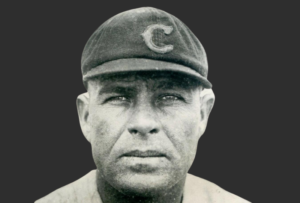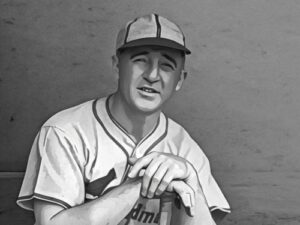Of all professional team sports in North America, baseball has been around the longest. Springing out of the 19th (and perhaps even 17th or earlier) centuries, it’s no surprise that baseball has many unique terms that have been around a long time. Some are confusing to newer fans or even leave hardcore fans scratching their heads. Here’s a list of some of the more interesting baseball terms and their origins. Some are very old, and a few have been around just a short while.
1. Why it’s called the Bullpen
The origin of the term bullpen, as used in baseball, is debated, with no one theory holding unanimous, or even substantial, sway. The term first appeared in wide use shortly after the turn of the 20th century and has been used since in roughly its present meaning. According to the Oxford English Dictionary the earliest recorded use of “bullpen” in baseball is in a 1924 Chicago Tribune article from October 5. The earliest known usage of the term “bull pen” relating to an area of a baseball field is in a New York Times article from June 24, 1883. The earliest known relief pitching related usage of “bullpen” in the New York Times is in an article dated September 18, 1912. A few of the possible origins:
- In the 1800s, jails and holding cells were nicknamed “bullpens”, in respect of many police officers’ bullish features – strength and a short temper.
- The bullpen symbolically represents the fenced in area of a “bull’s pen”, where bulls wait before being sent off to the slaughter. The relief pitchers are the bulls and the bullpen represents their pen.
- The name may be a reference to rodeo bulls being held in a pen before being released into the main arena.
- Latecomers to ball games in the late 19th century were cordoned off into standing-room areas in foul territory. Because the fans were herded like cattle, this area became known as the “bullpen”, a designation which was later transferred over to the relief pitchers who warmed up there.
- At the turn of the century, outfield fences were often adorned with advertisements for the Bull Durham brand of tobacco. Since relievers warmed up in a nearby pen, the term “bullpen” came about.
- Hall of Fame manager Casey Stengel suggested the term might have been derived from managers getting tired of their relief pitchers “shooting the bull” in the dugout and were therefore sent elsewhere, where they would not be a bother to the rest of the team – the bullpen. How serious he was when he made this claim is not clear.
2. What is the Batter’s Eye?
The batter’s eye is most frequently mentioned during television broadcasts. The batter’s eye or batter’s eye screen is a solid-colored, usually dark area beyond the center field wall of a baseball stadium, that is the visual backdrop directly in the line of sight of a baseball batter, while facing the pitcher and awaiting a pitch. This dark surface allows the batter to see the pitched ball against a sharply contrasted and uncluttered background. Its primary purpose is the safety of the batter. The use of a batter’s background has been standard in baseball (as well as cricket) since at least the late 19th century. At Fenway Park in Boston, the batter’s eye is made by laying a large black tarp over a section of the center field bleachers. During day games, the seats will not be sold so the tarp can be laid down; however, during night games, when the batter is more likely to be able to see the ball regardless of the backdrop, the seats are sold. This has often created unusual seating arrangements during night games that are made up during part of a day-night doubleheader as the sections remain uncovered for the people who have purchased the seats. The Red Sox have solved this problem by handing out T-shirts of the same color to these fans to wear during the game. At Wrigley Field, the center field bleachers used to be closed off and covered by a tarpaulin, and later by juniper plants. There is now a shaded luxury suite there referred to by the Cubs as the “Bud Light Batter’s Eye”
3. The Forgotten Game of Pepper
If you never played this game as a kid, you missed out. Pepper is a common pre-game exercise where one player hits sharp, short grounders and line drives to a group of fielders who are standing around twenty feet away. The fielders throw to the batter who uses a short, light swing to hit the ball on the ground back towards the fielders. The fielders field the ground balls and continue tossing the ball to the batter. This exercise keeps the fielders and batter alert, and helps to develop quickness and good hand-eye coordination.
The reason it became known as “pepper” was that the batter was “peppering” his teammates with the baseball, “sprinkling” the ball to them. This stems from the pepper used at dinner time – the user sprinkling the black stuff onto their dish.
Few major leaguers play pepper anymore, but at one time, as recent as the mid-1970s, it was a common site in ballparks before batting practice. A famous sign at Tiger Stadium in Detroit warned “No Pepper Allowed” behind the plate and near the dugouts- because the team wanted to protect their own players and spectators prior to games in those areas. As of 2012, most stadiums ban pepper because they do not want the excessive wear and tear on the grass in one area.
4. Why is it called a Doubleheader?
They don’t schedule them any more, but a doubleheader is a set of two baseball games played between the same two teams on the same day in front of the same crowd. In addition, the term was often used unofficially to refer to a pair of games played by a team in a single day, but in front of different crowds and not in immediate succession. In this case, the park would be emptied of fans after the first contest, and after a set period of time, new ticketed fans would be let in for the second game.
For much of baseball history, teams scheduled doubleheaders regularly on special days (Memorial Day, July 4th, and Labor Day were annual events) and for some teams on a weekly basis. Many teams, notably Phialdelphia’s Atheltics and Phillies, could not play games on Sunday in the early parts of the 20th century, and thus they would schedule a doubleheader on Saturday to get in a full series. With the new bargaining agreements on the 1980s and 1990s, most doubleheaders were eliminated because owners wanted to increase revenues by having more gate days and players did not want to play two games in a single day. Doubleheaders are played now only when events like rain or snow storms necessitate them.
The term originated in the railroad industry, from double-heading, which was the practice of having a train with more than one locomotive (sometimes as many as three) and charging tickets for each.
5. The origin of the phrase “Can of Corn”
You may hear this one every once in a while, but it’s a truly rare – and old – baseball term. A ‘can of corn” is a lazy flyball that is very easy for a fielder to catch. The phrase is believed to have originated in the19th century and relates to an old-time grocer’s method of getting canned goods down from a high shelf. Using a stick with a hook on the end, a grocer could tip a can so that it would fall for an easy catch into his apron. One theory for use of corn as the canned good in the phrase is that a can of corn was considered the easiest “catch” as corn was the best selling vegetable in the store and so was heavily stocked on the lowest shelves. Another theory is that the corn refers to the practice in the very early days of baseball of calling the outfield the “corn field,” especially in early amateur baseball where the outfield may have been a farm field.
6. The Hot Stove League
This phrase does not refer to an actual league “league”, but instead calls up images of baseball fans, anxious for the start of the new season, gathering around a hot stove during the cold winter months discussing their favorite baseball teams. The term has also come to refer to the wave of off-season player transactions (trades, re-signings, free agency, etc.) that occur between seasons, especially during the winter meetings in December. Since most free agent signings and trades occur during the off-season, this time of significant player transactions (including rumors and speculation about possible trades), is often referred to as the “Hot Stove League” or sometimes more simply “Hot Stove”. Essentially, teams continue competing, except it is the team owners and general managers who are doing the playing, with the score being in terms of human resource losses and gains. The term is essentially an extension of the question, “What’s cookin’?”, since the off-season is the time-period when teams concoct their plans and rosters for the next season.
7. What is a Baltimore Chop?
A Baltimore chop is a ball hit forcefully into the ground near home plate, producing a bounce high above the head of a fielder. This gives the batter time to reach first base safely before the ball can be fielded. It’s usually used today to describe a ball hit in that manner accidentally or by circumstance, but the original Baltimore chop was an intentional offensive weapon used by the Orioles in the 1890s when Baltimore was one of the power teams in the old National League. John McGraw, who would go on to a Hall of Fame career as manager of the New York Giants in the first 30 years of the 20th century, was the Orioles third baseman and an expert at bouncing the ball into the ground to achieve the desired effect. Several of his teammates, including Wee Willie Keeler, Hughie Jennings, Joe Kelley, and Steve Brodie, were also adept at the chop. The Baltimore groundskeeper, a man named Tom Murphy, allegedly watered the dirt around home plate before games to make it harder, thus making it easier for the Orioles batters to perform the chop.
8. Why it’s Called the Five-hole
Compared to the others on this list, this term is new. The five-hole refers to the area of the field between the third baseman (known as “5” in defensive scoring) and shortstop (signified by “6” in scoring). When a batter hits a ball through that spot and into left field, he is said to have hit it “through the five-hole.” Some players became legendary for having the ability to hit singles through the five-hole, most notable Tony Gwynn, who had the phrase printed on his batting gloves and spikes, and Rod Carew and Ichiro Suzuki. Usually, a left-handed batter is noted for being able to hit into the five-hole, since it’s his opposite field.
9. Why Left-handed Pitchers are Called Southpaws
Since the earliest days of the game, most ballparks were built so that home plate was in the west and the outfield was in the east, so that the sun would not set in the batter’s eye. Because of this, when a left-handed pitcher was on the mound, his arm would always be facing south when he faced the plate. Thus he has a “southpaw.” All ballparks are built in that orientation today, so it’s quite literal that every lefty on your favorite team has a southpaw when doing his job. This is one of those terms that has transcended baseball and entered the English lexicon to refer to any left-handed individual.






